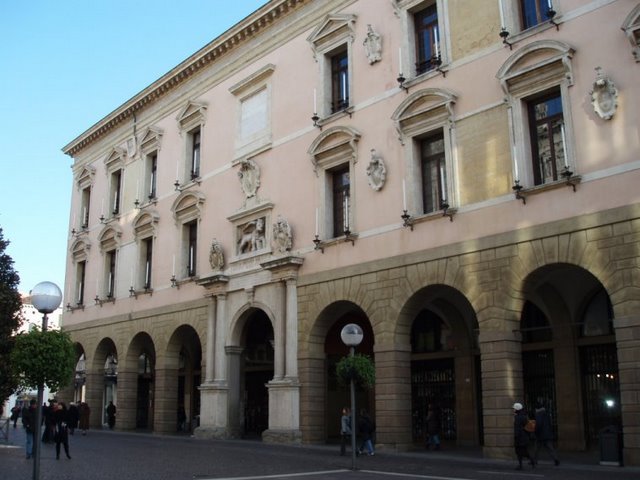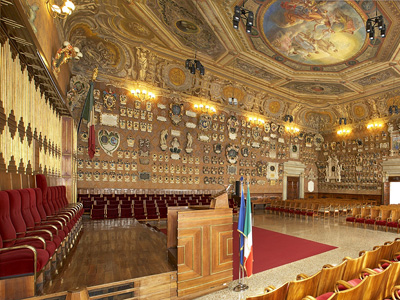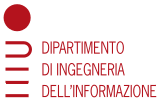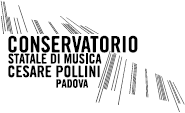Venue
Dept. of Information Engin. / Palazzo Bo / The Conservatory / The University
SMC2011 will happen in several places in the city of Padova, Italy.- The Summer School and the Rencon Workshop will be held at the Aula Magna "A. Lepschy", the Main Hall of DEI (the Dept. of Information Engineering of the University of Padova).
- The Conference itself will be hosted both in the central headquarters of the University of Padova, and in the Conservatory of Padova.
- The Technical Program will be held at the Aula Magna "Galileo Galilei", the Main Hall of Palazzo Bo, the historical building of the University of Padova;
- the Music Program will be held in the Auditorium of the Conservatory.
Dept. of Information Engin.
The Department of Information Engineering - DEI was formed by staff originally based at the Institute of Electrical and Electronics Engineers. The Institute, in turn, had evolved from the Chair of Electrical Engineering founded at Padova University's Engineering Faculty in 1903. The courses for the Laurea Degree of Industrial Electrical Engineering were first taught in Padova in 1928, while courses for the Laurea Degree in Electronic Engineering and Electrical Engineering began in 1960.In 1980, Italian law allowed universities to found departments to coordinate research activities. The Institute of Electrical and Electronic Engineering was then split into two separate departments: Electrical Engineering (DIE) and Electronics and Informatics (DEI), which was established on June 1, 1987, and changed its name to Department of Information Engineering on June 1, 2002.
The Department is one of the highest earners of income for the University of Padova, and comprises more than 90 staff members and approximately 4.000 undergraduate and postgraduate students, more than 90 Ph.D. students and post-doctoral fellows. About 30 administrative and technical staff support the Department’s teaching activities.
Palazzo Bo

Located near the street traditionally occupied by butcher's shops, Palazzo Bo derived its name from the sign of the famous Hospitium Bovis [Ox Inn] that occupied one of the patrician homes built in this area from the end of the thirteenth century onwards. The conversion of the existing structures for university use began in 1494 and would be concluded at the beginning of the seventeenth century. A new programme of work on the structure would begin in 1889, with the building being completed in its present form in 1938-1942. That latter phase included the creation of the New Court, commissioned from the architect Ettore Fagiuoli by the then Chancellor, Carlo Anti. The décor and furnishings of the completed structure were the work of the famous architect Giò Ponti.

The Main Hall housed "The Great School of Jurists" and was the place where lessons were held. One of those who taught here was Galileo, and the hall is now dedicated to his memory. Used in the first years of the nineteenth century as a drawing studio, the space would only become the university's Great Hall after restoration in 1854-56. Painted then, the ceiling frescoes are by Giulio Carlini; the central allegory depicts Wisdom and the Other Disciplines. The architect Giò Ponti would in 1942 do the work that gave the end wall its present appearance. This is where the members of the University Senate sit during important occasions (the opening of the academic year, the presentation of honorary degrees, etc.); the inscription is the university's ancient motto: Universa Universis Patavina Libertas.
The Conservatory

Musical teaching tradition in Padua dates back to Renaissance. The Accademia degli Elevati was established in 1557 and was devoted to instrumental and singing teaching. In the following years the University was chosen as the most suitable environment for music teaching, until the Conservatory was established in 1878. Since its origins the Music Institute has had directors and teachers of undisputed value such as Cesare Pollini, a great composer and pianist to whom the Conservatory is dedicated since his sudden death in 1912. The Conservatory's Auditorium has today a capacity of around 550 people, and has been recently equipped with a multichannel system and a loudspeaker cluster.
The University
Padova is known for the second oldest University in Europe. The year 1222 is officially recognised as that of the foundation of Padova University; however, even before then the city was home to 'schools' for the study of law. The establishment of the university itself was due to the move here of a number of teachers and students from nearby Bologna University, their decision being caused by "grave offences to academic freedoms and the failure to observe the privileges solemnly granted to teachers and students." So, Padova was not a university founded by papal or imperial decree, but rather the "fruit of particular events and most favourable cultural circumstances." The spirit of academic freedom that inspired its foundation would continue to be a characteristic of the university over the centuries. Guaranteed by the free City Commune (13th century), it was then protected by the fourteenth-century Da Carrara rulers of the city and later by the Republic of Venice, which governed Padova from 1405 to the end of the eighteenth century. Quite rightly, the University's motto remains Universa Universis Patavina Libertas.
At first a centre for the study of law, the university would gradually expand to cover other disciplines. In 1399 it was divided into two universitates: Iuristarum, for the study of civil and canon law, and Artistarum, for the study of medicine, philosophy, theology, grammar, dialectics, rhetoric and astronomy.
Initially, the university was organised as a free corporation of students, who were divided into nationes according to their region or ethnic group of origin. These nationes themselves then formed two larger groups: the citramontani (the Italians) and the oltramontani (the non-Italians). It was the students who approved the university statues, elected the rectors, chose the teachers and paid them with money collected from those attending their lessons. Then the teachers were directly called and paid by the public authority.
The fifteenth century marked the beginning of a period of great splendour and development, which would continue for at least three centuries to come. Having decided that Padova should be the sole Gymanisum Omnium Disciplinarium for the entire Venetian Republic, the government in Venice guaranteed an extraordinary level of religious tolerance and freedom of thought – something which undoubtedly contributed to the growing international reputation of the University. Not only did Padova contribute to the rapid development of philosophical thought then taking place, it also had important schools of medicine and anatomy. And, of course, there was Galileo Galilei, who taught at Padova for eighteen years, making fundamental contributions in the fields of astronomy, physics and mathematics. All in all, Padova played a great role in the nascent scientific revolution, and as a result attracted students from all over Europe. In the scientific field, this period in the university's history is significant for numerous reasons, amongst which one might mention: Gian Battista Da Monte's contribution to the birth of modern medicine (he was the first in Europe to teach clinical medicine at the bedside of his patients); the 1545 foundation of the world's first public university Botanical Garden; the study of anatomy as a means to further medical knowledge; the construction of the world's first Anatomy Theatre (1594-95). Meanwhile, the university was also distinguishing itself in other fields. Philosophy was gradually breaking away from the schema imposed by scholasticism; and the Jurisprudence department was so prestigious that the governments of Europe applied to it for rulings and opinions.
The fall of the Venetian Republic (1797) and the political vicissitudes that preceded Italian Unification (1866) led to reduced economic resources and increased restraints on freedom of thought; however the university continued to fulfil its role successfully at a regional level. Padova's professors and students would participate actively in the struggle for Italian independence, most noticeably in the local uprising of February 1848. The university also found itself in the frontline during the First World War, when Padua became the centre of a military zone of operations. True to its above-mentioned motto, it would be the university itself that was a centre of operations within the Veneto during the struggle against Fascism and the occupying Nazi forces, with Chancellor Concetto Marchesi and Vice-Chancellor Egidio Meneghetti playing leading roles. In fact, due to the number of young people here who gave their lives in that struggle, Padova is the only university in Italy to have been awarded the Gold Medal of Military Valour.
Today, Padova is one of Italy's most prestigious universities. Fully autonomous since 1995, it is now a regional presence, with teaching branches and departments located throughout the Veneto region.















